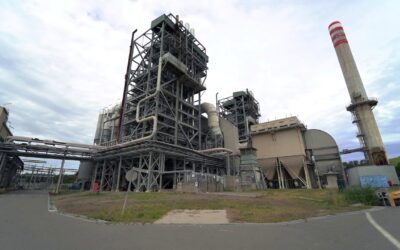Key Takeaways
- This decision clarifies the circumstances surrounding the lapsing of development consents.
- The case highlights the importance of the wording in each unique development consent.
- Development consents may not lapse in the context of staged developments where the work required is contemplated to be done at a later date.
The recent decision in Donvito v Hawkesbury City Council [2022] NSWLEC 26 gives a key insight as to what circumstances will result in consent for staged developments lapsing. The Applicants sought a declaration from the Court that their development consent had not lapsed.
Background
The facts involved the Applicants, Mr and Ms Donvito, applying to Hawkesbury City Council (the Council) for development consent in June 2012 to construct a boarding house in part of an industrial premises located in South Windsor. The proposed development was subsequently approved in July 2013.
Section 4.53(1)(a) of the Environmental Planning and Assessment Act 1979 (NSW) provides that a development consent lapses five (5) years after the date from which it was granted. For the Applicants, this meant that the consent would have lapsed if building work pursuant to that consent had not taken place prior to 9 July 2018.
It was found that Mr Donvito had undertaken works at the building site just prior to the lapsing of consent in July 2018. However, the substance of the development consent raised questions as to whether the works that had taken place were enough to prevent the consent from lapsing.
The Development Consent
As part of the development consent, condition 12 stated the following:
The existing asbestos roof shall be removed and replaced by a metal roof. The plans submitted with the construction certificate must indicate the installation of a metal roof.
The words ‘the construction certificate’ were the critical words engaged for consideration. At the time of the potential lapsing date in 2018, there was no plan in existence which satisfied this condition.
However, condition 12 must be read in the context of the rest of the development consent. In particular, condition 15 provided that:
A construction management program shall be submitted and approved by the Council prior to the issue of any construction certificate… The proposed order in which works on the site will be undertaken and the method statements on how the various stages of construction will be undertaken
Decision
It was found that condition 15 clearly envisages multiple stages of construction to be undertaken and in contrast with condition 12, the use of the words ‘any construction certificate’ contemplates that there may be more than one such certificate. Mr Donvito had provided an adequate Construction Management Plan for the first stage of the implementation of the boarding house development consent.
It followed that there was no explicit requirement that the work outlined in condition 12 had to be encompassed within the Stage 1 construction certificate. Further, the DA Conditions Compliance matrix prepared in 2018 expressly nominated that the works involving the asbestos roof would be addressed in a Stage 2 construction certificate.
Therefore, because the 2013 consent was proposed to be effected in stages and that Stage 1 did not include any work to the asbestos‑sheeting roof, it was appropriate that satisfaction of condition 12 could be deferred for satisfaction until the stage when such works to the roof were contemplated (in this case Stage 2).
Conclusion
The Court in light of the above, declared the development consent issued by the Council on 9 July 2013 to have not lapsed. The Applicants were able to continue to rely on the development consent for the construction of a boarding house at the premises.
This case emphasises the importance of adhering to the requirements of the development consent in determining whether it has lapsed. The Applicants here were able to rely on the wording of the particular development consent as staged developments to ensure the consent remained on foot.
If you would like advice about anything in this article, please contact Greg Lee on 02 8235 1254 or your usual ClarkeKann contact.


